The new Porsche 911
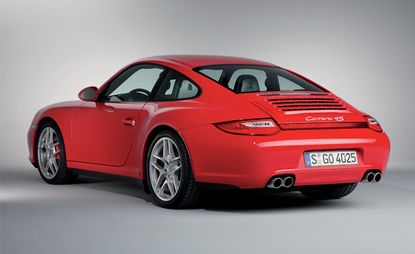
It's oft said that Porsche 911 drivers are immune to any critical barbs and snide comments that might be cast their way. How? Simply put; the 911 is just very, very good indeed. To pretend otherwise is sheer bloody-mindedness, the automotive equivalent of the flat earth theory. Thus the 911 driver knows from the outset that any criticism is, most likely, ill-informed.
It's true that the 911 is not quite perfect (more of which later), but perhaps more than any other car on the market, Porsche's flagship model demonstrates the rigorous, unstinting application of technological progress to a basic template; it is mechanical evolution laid bare. The 911 Carrera 4S Coupe shown here isn't the fastest 911 model on the market (that honour falls to the Turbo and the recently launched 3.8 Sport Classic). It's also not the lightest, nor the cheapest, but it perhaps the most competent all-rounder, blending sure-footed grip, comfort, equipment and, naturally, high performance, into a very satisfying package.
The stealthy evolution of the familiar 911 form means that only a true aficionado can make a snap identification of which particular vintage a model dates from. Again, this cloak of familiarity serves to insulate the 911 owner against the shock and awe of modern supercar culture, where the extravagant and outrageous still vie for attention outside casinos and alongside marinas. We're not saying that the 911 is an entirely stealthy choice, but the decision to venture into Porsche territory demonstrates a certain disavowal of the vagaries of fashion; an understanding of design's apparently abandoned capacity for immutability.
This dogged adherence to familiarity isn't always for the best. The interior is a curious mix of technical brilliance – one of the best Sat Nav systems on the market, simple controls and beautifully designed switchgear – and ergonomic confusion. In basic concept, the 911 dash format hasn't changed for decades, meaning that all the accoutrements and additional switchgear demanded of contemporary car design are scattered about the cabin like confetti.
On the other hand, the relatively upright seating position and glassy outlook give the 911 driver a great vantage point, far removed from the low-slung isolation of the typical mid-engine two-seater, and better still than many modern hatchbacks, with their fashion-conscious chunky pillars and shrinking glasshouses.
We digress, but there aren't many downsides to 911 ownership. True, those rear seats are absurdly compact, but no more so than the +2 component to, say, an Aston Martin DB9. While the rear seats are an integral part of the 911 character, their very existence has always thrown the whole packaging out of balance by pushing the engine back over the rear axle. As a result, early 911s were often a challenging steer, qualities that have largely been ironed out of their descendants.
The Carrera 4S throws four wheel drive into the mix, making it almost impossible to exceed the capabilities of the chassis; this is a car that corners with verve and precision, goes exactly where you'd expect and has plenty of wriggle room to forgive driver error. It also possesses that true sports car trick of making you feel you're going faster than you actually are, thanks to a combination of smoothing out corners, instant throttle response and precision handling.
Wallpaper* Newsletter
Receive our daily digest of inspiration, escapism and design stories from around the world direct to your inbox
385 bhp is still a lot of power, even by modern standards, and the Carrera 4S is temptingly rapid (the 'sports chrono pack' option provides you with a dash-mounted chronograph, a strong hint that owners should explore the car's limits on the track and not the road). Fuel economy and emissions are both respectable and the company's quest for lightness and efficiency was demonstrated by the recent introduction of the world's first lithium-ion car battery, a pricey but lightweight option on its high-end sports models and a sure sign of things to come.
Unfortunately, it's distressingly easy to pile on several thousand pounds worth of options, many of which would be standard issue on rival cars, in the quest to take the specification up to the level of something befitting a sports GT. Whatever you chose does little to alter the basic fact: the 911 feels right as well, just as a fine pair of gloves shrink over the fingers. The thin steering wheel – a rarity in today's market – is paired with a short-throw gearchange that rewards precision and (optional) carbon brakes that inspire epic confidence.
An all-new 911 is due in late 2010 but it's not expected to deviate far from the established visual template: drivers of 911s from all eras will no doubt breathe a sigh of relief. Hybrid power and even electric drive are rumoured to be in the works, however, demonstrating that Stuttgart's flagship will continue to represent the ongoing evolution of the sports car.
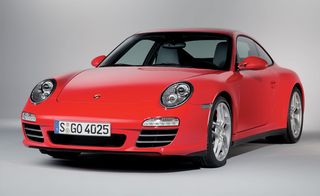
The new Porsche 911

Rear view of the new Porsche 911
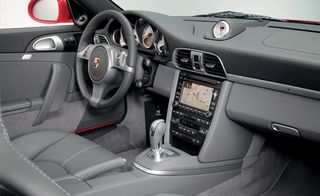
Interior of the new Porsche 911

Interior of the new Porsche 911

Interior of the new Porsche 911
Jonathan Bell has written for Wallpaper* magazine since 1999, covering everything from architecture and transport design to books, tech and graphic design. He is now the magazine’s Transport and Technology Editor. Jonathan has written and edited 15 books, including Concept Car Design, 21st Century House, and The New Modern House. He is also the host of Wallpaper’s first podcast.
-
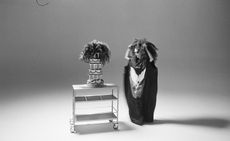 Kembra Pfahler revisits ‘The Manual of Action’ for CIRCA
Kembra Pfahler revisits ‘The Manual of Action’ for CIRCAArtist Kembra Pfahler will lead a series of classes in person and online, with a short film streamed from Piccadilly Circus in London, as well as in Berlin, Milan and Seoul, over three months until 30 June 2024
By Zoe Whitfield Published
-
 Monospinal is a Japanese gaming company’s HQ inspired by its product’s world
Monospinal is a Japanese gaming company’s HQ inspired by its product’s worldA Japanese design studio fulfils its quest to take Monospinal, the Tokyo HQ of a video game developer, to the next level
By Ellie Stathaki Published
-
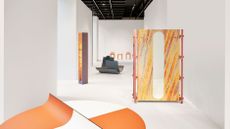 Fenix and Federica Sala Challenge Designers to double up
Fenix and Federica Sala Challenge Designers to double upCurator Federica Sala and innovative interiors material brand Fenix's Design Duo Double Feature project brings three design duos together to create dual-purpose furniture
By Ifeoluwa Adedeji Published
-
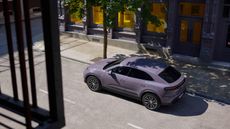 Porsche transforms the Macan into its newest all-electric model
Porsche transforms the Macan into its newest all-electric modelThe new Porsche Macan 4 and Macan Turbo are compact electric SUVs that mark a major step in the company’s transformation into a luxury EV maker
By Jonathan Bell Published
-
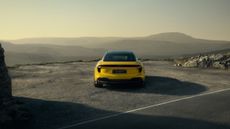 24 transportation design innovations for 2024
24 transportation design innovations for 2024From electric cars to new airports and sports boats, here’s a non-exhaustive list of 24 of the most interesting transportation design innovations to expect in the coming year
By Jonathan Bell Published
-
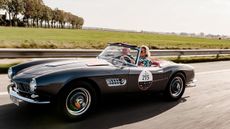 Zoute Grand Prix is a car fest like no other at a pristine Belgian beachside town
Zoute Grand Prix is a car fest like no other at a pristine Belgian beachside townAmy Serafin takes to the well-heeled streets of Knokke-Heist to experience the Zoute Grand Prix, its annual cavalcade of classic car-related events, from a rally to an auction
By Amy Serafin Published
-
 Porsche and Frauscher take to the waves with all-electric 850 Fantom Air boat
Porsche and Frauscher take to the waves with all-electric 850 Fantom Air boatAn electric sports day cruiser, the Frauscher x Porsche 850 Fantom Air is a swift and luxurious floating showcase for the sport car maker’s advanced electric drive systems
By Jonathan Bell Published
-
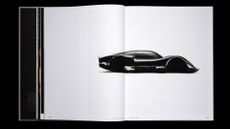 New book ‘Artifacts’ charts the history of Porsche through its archives
New book ‘Artifacts’ charts the history of Porsche through its archivesUnwrap this beautifully designed book and dive into Porsche’s extensive historic archives, courtesy of Type 7 and ERG Media
By Jonathan Bell Published
-
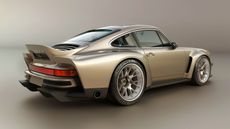 Singer Vehicle Design unveils newly reimagined Porsche 911, the DLS Turbo
Singer Vehicle Design unveils newly reimagined Porsche 911, the DLS TurboInspired by the full-blooded endurance racers of the 1970s, this bold Dynamics & Lightweighting Study is the ultimate in bespoke, retromodded supercars
By Jonathan Bell Published
-
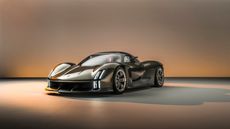 Porsche Mission X concept sees the marque set its sights high
Porsche Mission X concept sees the marque set its sights highThis all-electric hypercar has lofty performance goals and a new look for Porsche sports cars. Will it reach production?
By Jonathan Bell Published
-
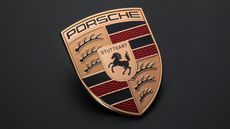 New Porsche crest hones the lines and forms of the famous German automotive brandmark
New Porsche crest hones the lines and forms of the famous German automotive brandmarkThe updated Porsche badge, part of the brand’s 75th anniversary year, subtly reshapes every element to keep the logo current in the age of electrification
By Jonathan Bell Published